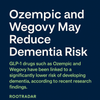by TOM PAGONIS, DDS, MS
Introduction
According to the World Health Organization, the prevalence of marijuana use is 4% of the global population, age 15 to 64 which includes use by 13% of American adults - it is most frequently used illegally in the U.S. and Canada (1,2). State legalization of marijuana (Cannabis) is rapidly progressing (Figure 1) (3) and with this expansion of legalization comes increased used, increased disclosure of use all with an accompanying set of unique circumstances for dentists.
Figure 1: Status of marijuana laws by state as of March 2019
Marijuana is a palmate leaved member of the Cannabaccae family of plants and can grow quite easily in a wide variety of climates. Of interest, another medicinal plant in the same family is hops or Humulus lupulus used for the brewing of beer for its medicinal or antibacterial effect along with its effect on flavoring and aroma (4).
The human physiological response to marijuana is well documented as a substance that can modulate a variety of human responses including motor, immune, pain, inflammation along with memory and cognition. Marijuana contains a high number of cannabinoids which are highly selective for naturally occurring CB1 and CB2 endoccanabinoid receptors. Activation of these receptors control and modulate the above referenced human responses. One of the most important and potent cannabinoid is tetrahydrocannabinol (THC) which is primarily responsible for psychoactive effects (5). General cardiovascular effects of marijuana use are immediate and include tachycardia and microvascular disruption. Sustained use puts a user at risk for hypertension, myocardial infarction, and stroke (6).
The recreational effects of marijuana are primarily attributed to behavioral and neurological manifestations of euphoria with concomitant impairment of cognition and motor function. From a medicinal perspective, it is recommended for pain reduction, as an antiemetic, as an anti-inflammatory and as adjunctive therapy in reducing intraocular pressure for glaucoma (6,7). Additional proposed therapeutic uses include anxiety, depressive/bipolar disorders, schizophrenia and Crohn’s disease. Cannibis can be administered in a variety of forms as a medicinal agent including smoking in its plant form, vaping, eaten as a food ingredient but its most common route of administration is in tablet or capsule form such as Marinol® (8) and the synthetic cannbinoid nabilone Cesamet® (9). While some studies suggest little differences in effectiveness by route of administration other research highlights differences in pharmacokinetics (Table 1).
Table 1
Oral Effects
Generally speaking, marijuana users have poor oral health which is characterized by higher decayed, missing, filled (DMF) rates and high plaque scores. These manifestations are somewhat complicated if one considers the infrequency of dental visits of marijuana users along with the appetite-stimulating effects of THC and the propensity of users to be drawn to high cariogenic diets. Additional oral pathoses include marked changes in the oral epithelium which is termed “cannabis stomatitis”. This is characterized by hyperkeratosis, erythroplakia, and leukoplakia which can precede the development of malignant neoplasms. Additional chronic effects of marijuana use include xerostomia, gingival hyperplasia and periodontal disease (1,5,11).
Dental Care Implications
Increased legalization of marijuana should increase disclosure of use whether medicinal or recreational. It follows then that increased disclosure will help with the development and implementation of treatment planning. From a marijuana-drug interaction standpoint, the dentist must be aware of possible effects with analgesics, anti-inflammatories, antibiotics, antifungals and sedative agents. For the patient that discloses use, it’s an opportunity to discuss and encourage a healthy diet, regular visits, dental preventative measures, the effect of marijuana on prescribed medication, increased bleeding with certain procedures and even to avoid cannabis before a dental appointment (12,13).
Whether the patient discloses or does not disclose use a dentist must be aware of the signs and symptoms of the intoxicated or “high” user. This includes, hyperactivity, euphoria, tachycardia, or even paranoia and hallucinations. Besides the obvious behavioral and psychomotor manifestations of an intoxicated user, there are practical and even potentially dangerous matters such as the administration of epinephrine-based local anesthetics which would preclude a dentist from providing care. There may even be legal questions on the validity of informed consent signed by an intoxicated user (12,14).
Employer Considerations
While legalization for both medicinal and recreational uses is increasing in U.S. states, marijuana is prohibited under federal laws which means that employers that are highly regulated by the federal government can randomly screen employees and as part of the hiring process. For comprehensive and updated state-specific marijuana legislation check here.
References
- Maloney WJ. Significance of Cannabis use to dental practice.NYSDJ. 2011; April: 36-39
- McCarthy J. One in Eight US Adults Say They Smoke Marijuana. Gallup Social Series: Gallup; 2016
- Retrieved from https://disa.com/map-of-marijuana-legality-by-state
- Schönberger C, Kostelecky T (16 May 2012). "125th Anniversary Review: The Role of
- Hops in Brewing". Journal of the Institute of Brewing. 117 (3): 259–267.
- Cho CM, Hirsch R, Johnstone S. General and oral health implications of cannabis use. Aust Dent J 2005;50(2):70-4.
- Rechthand MM, Bashirelahi N. What every dentist needs to know about cannabis. Gen Dent 2016;64(1):40-3.
- Bostwick JM. Blurred Boundaries: The Therapeutics and Politics of Medical Marijuana. Mayo Clinic Proceedings 2012;87(2):172-86.
- Marinol prescribing information. (2017). Retrieved from https://www.rxabbvie.com/pdf/marinol_PI.pdf.
- Cesamet prescribing information. (2013). Retrieved from http://cesamet.com/pdf/Cesamet_PI_50_count.pdf.
- Thomas, G., Kloner, R., & Rezkalla, S. (2014). Adverse cardiovascular, cerebrovascular, and peripheral vascular effects of marijuana inhalation: What cardiologists need to know. American Journal of Cardiology, 113(1), 187-190.
- Cho, C.M., Hirsch, R., & Johnstone, S. (2005). General and oral health implications of cannabis use. Australian Dental Journal, 50(2):70-4.
- Scully C. Cannabis; adverse effects from an oromucosal spray. Br Dent J 2007;203(6):E12; discussion 336-7.
- Rechthand MM, Bashirelahi N. What every dentist needs to know about cannabis. Gen Dent 2016;64(1):40-3.
- Maloney WJ, Raymond GF. Common Substances and Medications of Abuse. The ADA Practical Guide to Substance Use Disorders and Safe Prescribing: John Wiley & Sons, Inc.; 2015. p. 83-118.




